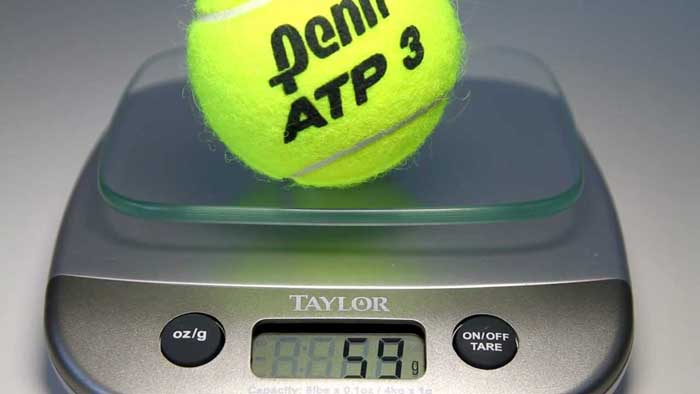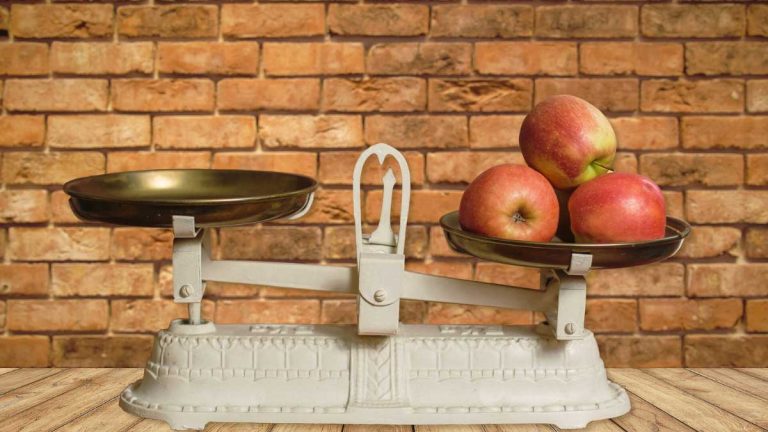How Much Does Tennis Ball Weigh: A Detailed Guide
When you think of tennis, you might picture the swift movements of players or the iconic sound of a racket meeting a ball. But have you ever paused to consider the weight of a tennis ball? This seemingly simple detail plays a vital role in the sport’s dynamics. According to the International Tennis Federation (ITF), a regulation tennis ball should weigh between 56 and 59.4 grams, ensuring consistency and fairness in play.
Why is this weight range so crucial? It’s all about balance. A heavier ball offers more control and power, while a lighter one might enhance speed but at the cost of accuracy. This careful calibration allows players to rely on predictable ball behavior, leveling the playing field. Whether you’re a seasoned player or just a curious fan, understanding the weight of a tennis ball can deepen your appreciation for this beloved sport.
Key Takeaways
- The weight of a regulation tennis ball is crucial for maintaining consistency in the game, with the International Tennis Federation (ITF) specifying a range between 56 and 59.4 grams.
- Heavier tennis balls enhance control and power, ideal for players focused on forceful strokes, while lighter balls can increase speed, catering to players who prioritize agility.
- Tennis ball weight can vary due to external factors such as usage and environmental conditions, impacting performance and gameplay.
- The materials and construction of tennis balls, including rubber cores and felt coverings, contribute to slight weight variations that affect bounce and control.
- Different types of tennis balls—pressurized and pressureless—serve distinct purposes, with weight variations influencing their suitability for competition or practice.
- Proper storage and maintenance of tennis balls, such as using airtight containers and controlling environmental conditions, help maintain their optimal weight and performance on the court.
Understanding Tennis Ball Specifications
Tennis balls aren’t just simple objects but rather carefully crafted tools for fair play in the sport. Knowing how much a tennis ball weighs can help you appreciate its impact on the game.

The Standard Weight of a Tennis Ball
You might find it surprising that the weight of a tennis ball is meticulously defined. The International Tennis Federation (ITF) states that a standard tennis ball must weigh between 56.0 and 59.4 grams. This specific range ensures all players experience consistent gameplay, whether you’re a casual player or a professional.
Variability in Weight Due to External Factors
While the ITF sets a standard, there’s inherent variability even among new tennis balls. Imagine buying a new can and realizing that the weight of each ball can differ between 0.04 grams and 0.58 grams. This variation can affect how the ball behaves on the court.
When you play with a tennis ball, it loses weight over time. After rigorous use, like being fired 30 times onto a hardcourt, a ball can lose between 0.34 grams and 0.94 grams. This weight loss isn’t just due to usage but also because of the fuzz wearing off the ball.
Understanding these specifications and variations helps you make informed choices about the balls you use, ensuring fairness and enjoyment in your games.
The Importance of Weight in Tennis Balls
Understanding the weight of a tennis ball is crucial for enhancing your knowledge of the game. As you delve into this aspect, you’ll discover how weight impacts gameplay and the preferences of professional players.
Impact on Performance and Gameplay
The weight range of 56.0 to 59.4 grams set by the International Tennis Federation (ITF) plays a vital role in tennis performance. A heavier ball offers increased control and power, making it ideal for baseline players who rely on forceful strokes. This control helps maintain accuracy and manage intense rallies during a match. In contrast, a lighter tennis ball can enhance speed, benefiting players who prioritize agility and quick play.
- Control and Power: Heavier balls help generate power and maintain control.
- Speed and Agility: Lighter balls assist in faster play but may reduce precision.
The materials and construction of the ball, including its rubber core and felt covering made of wool, nylon, or cotton, affect its weight and impact its aerodynamic properties and bounce on different surfaces.
Perspectives from Professional Players
Professional tennis players often have specific preferences when it comes to ball weight, as it can significantly affect their game strategy. Players valuing control may prefer heavier balls, while those focused on speed and agility might opt for lighter ones.
By understanding players’ preferences, you can better appreciate the subtle intricacies influencing professional tennis. Moreover, this insight can guide your own choice of tennis balls, whether you’re playing casually or competitively. Comprehending the weight dynamics adds depth to your tennis experience, whether as a player or an enthusiast.
Tennis Ball Materials and Construction
Understanding the construction of tennis balls sheds light on why their weight varies slightly. This weight variation, while minor, influences the ball’s performance on the court.
How Materials Affect Weight
Tennis balls consist of a rubber core and a felt covering. The rubber core provides the ball’s elasticity and bounce, essential criteria for gameplay. Felt, often a blend of wool, nylon, and cotton, covers this rubber core. The nap, or fuzz, of the felt significantly impacts aerodynamics and the ball’s interaction with racquets and court surfaces.
Weight differences arise due to variations in material thickness and density. A denser rubber core increases weight but might offer more control. Conversely, a thinner felt covering reduces weight, potentially enhancing speed. Such variations must remain within the International Tennis Federation’s specified range of 56.0 to 59.4 grams.
Differences in Weight by Ball Type
Ball types differ by pressurization and intended use, leading to slight weight variations:
- Pressurized Balls: Containing internal air pressure, these balls offer a lively bounce and are often used in professional settings. Their weight falls within the ITF’s specified range, contributing to consistent flight and bounce.
- Pressureless Balls: These lack internal air pressure and rely on a denser rubber core for bounce, often weighing more than pressurized counterparts. They’re commonly used in practice sessions to maintain consistent performance over a prolonged period.
Professional and casual players alike can adjust their preferences based on these characteristics, affecting gameplay strategy and enjoyment.
Comparing Tennis Balls Across Uses
Explore the differences between various types of tennis balls to understand their tailored uses. Whether practicing or competing, choosing the right ball type enhances gameplay.
Standard Tennis Balls vs. Practice Balls
Standard tennis balls meet International Tennis Federation (ITF) standards, weighing between 56.0 and 59.4 grams. They’re ideal for competitive play, ensuring consistency in tournaments. Expect uniform flight and bounce characteristics when using these balls, which contributes to fair play across all levels.
In contrast, practice balls often focus on durability. These are pressureless, relying on a thick rubber core for bounce instead of pressurized air. While they don’t mimic the exact performance of standard balls, they offer long-lasting bounce for extended practice sessions. Choose practice balls when durability and longevity are priorities, particularly for schools or amateur setups.
Influence of Court Type on Ball Weight
Though all standard tennis balls adhere to weight specifications, the choice between types may vary depending on the court surface. On clay courts, a heavier ball may help control due to its reduced speed and lower bounce. Conversely, grass courts might benefit from slightly lighter balls, maximizing speed and bounce.
Consider the material and structure in conjunction with the court type for optimal performance. Recognizing these subtle differences aids in selecting or preparing the right ball for specific playing conditions. This attention to detail empowers your strategy and enhances playing experiences across various surfaces.
Maintaining Optimal Tennis Ball Weight
Maintaining the correct weight of a tennis ball is essential for consistent performance. Tennis balls weigh between 56 to 59.4 grams, as per ITF standards, ensuring fair play across levels.
Environmental Impact on Tennis Ball Weight
Environmental conditions, including temperature and humidity, impact a tennis ball’s weight and playability. Warm temperatures can increase the pressure inside the ball, causing it to become lighter and adversely affect bounce. Conversely, cold temperatures may reduce the ball’s internal pressure, making it heavier and reducing its responsiveness on the court. High humidity can add moisture to the felt covering, increasing the overall weight and altering its flight characteristics. Storing your tennis balls in a cool, dry place helps maintain optimal performance.
Best Practices for Storage and Maintenance
Proper storage and maintenance are crucial for preserving the quality of tennis balls. A few steps ensure longevity:
- Sealed Containers: Store balls in airtight containers to prevent pressure loss.
- Consistent Temperature: Maintain a stable environment, avoiding exposure to extreme temperatures.
- Low Humidity: Keep balls dry to prevent moisture buildup in the felt covering.
Following these practices ensures your tennis balls remain within the ideal weight range and maintain their bounce and responsiveness, enhancing your overall playing experience.
Conclusion
Understanding the weight of a tennis ball is essential for enhancing your gameplay and appreciation of the sport. By choosing the right ball for your playing style and court surface, you can optimize your performance. Remember to consider environmental factors and maintain your tennis balls properly to ensure they remain within the ideal weight range. This attention to detail will help you enjoy a consistent and fair playing experience, whether you’re practicing or competing.







